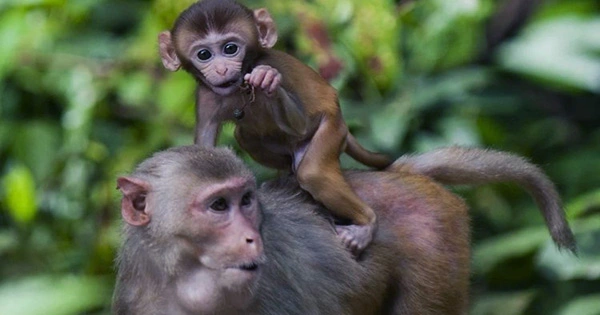No, the image above isn’t a still from The Rock, Sandra Bullock, or even Harrison Ford’s newest jungle-plundering adventure. These are India’s famous “living root bridges,” which have just been proposed to UNESCO for World Heritage status. The bridges, which are made of live roots controlled to grow over bamboo scaffolding and are found in the state of Meghalaya in northeast India, can take decades to build. They are necessary for transit and transportation through deep, damp rainforests, as beautiful as they are.
Indigenous Khasi tribal people have been growing the Jingkieng Jri, as they are known locally, for decades. When your home is mountainous, with waterfalls, ravines, and rivers, you have to think outside the box about how to move about – and in a hazardous, dense jungle, the ground isn’t always the greatest option. The roots of rubber trees (Ficus elastica) are teased and encouraged to grow around the bamboo, forming a strong mesh that can transport up to 50 people at a time, including individuals on horseback.
“I am ecstatic to report that our ‘Jingkieng Jri: Living Root Bridge Cultural Landscapes of Meghalaya’ has been tentatively added to the @UNESCO World Heritage Site list,” James Sangma, Meghalaya’s cabinet minister, tweeted. “The living room bridges are notable not only for their exceptional human-environment symbiotic interaction but also for their pioneering usage for connectivity and resilience, as well as the necessity to take sustainable economic and ecological measures.”
The bridges’ inclusion on UNESCO’s “tentative list” is the first step toward submitting them for World Heritage status, which is granted to locations of “Outstanding Universal Value to Humanity” that will be preserved for future generations to enjoy. UNESCO characterizes them as “structural ecosystems grown by Indigenous Khasi tribal societies that have operated in difficult climatic conditions for generations and encapsulate a deep harmony between humans and nature.” “The underlying knowledge and skill have grown through generations and are still used today, demonstrating their remarkable value and usefulness.”
The famed living bridges of India, which are made up of tree roots that have been coaxed and stretched into the shape of a suspension bridge across a river, have been added to Unesco’s tentative list for world heritage site recognition. In the northeastern state of Meghalaya, there are over 100 such bridges in 70 villages, each one a one-of-a-kind construction produced by a combination of nature and human creativity. The roots of the tree, generally the rubber tree (Ficus elastica), are teased and pushed to become intertwined with the bamboo until it creates a strong mesh once the bamboo construction has been extended across the river.















